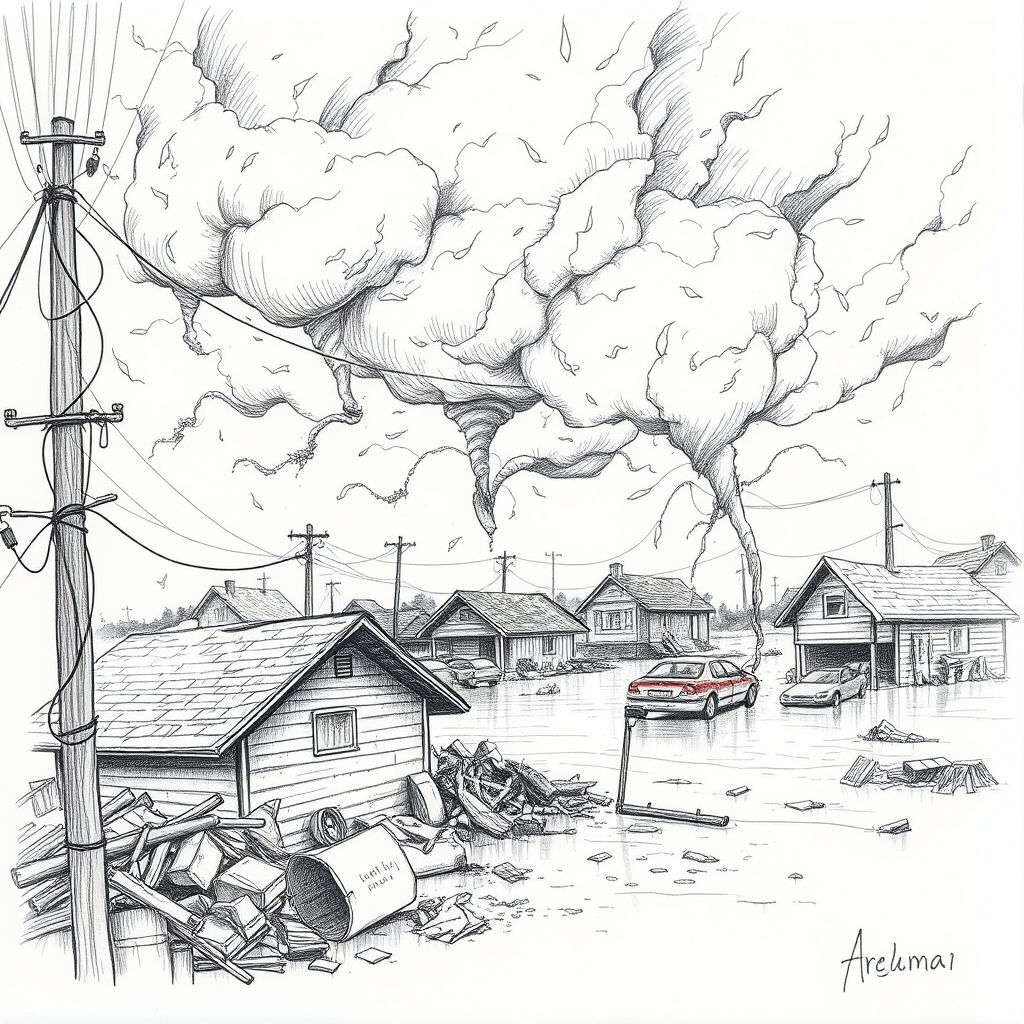US Storms: Deadly Tornadoes and Historic Flooding

A severe weather system is unleashing a barrage of tornadoes and torrential rainfall across the American South and Midwest, resulting in at least two confirmed fatalities and widespread damage. The National Weather Service has issued warnings of “generational” flooding as the storms stretch from Texas to Michigan, impacting an estimated 15 million people under tornado watches and nearly 6 million under specific tornado warnings, including residents of Nashville, Tennessee and Tupelo, Mississippi.
The storms have already left a trail of destruction. Reports indicate a radio tower collapsed in Indiana, vehicles were submerged in Indianapolis, and homes sustained damage in Arkansas. Over 200,000 customers are currently without power across Indiana, Arkansas, Missouri, and Mississippi. Social media posts depict significant damage in areas like Lake City, Arkansas and Selmer, Tennessee.
The intensity of the storms is raising concerns about the role of climate change. A recent study by Climate Central found that hourly rainfall rates have increased in 90% of US cities since 1970 due to a changing climate. AccuWeather reports that some areas could receive up to four months’ worth of rain within just five days.
Meteorologists are emphasizing the unprecedented nature of the flooding risk. Jonathan Porter of AccuWeather warned that even long-time residents may witness flooding in areas that have historically remained dry, urging caution and preparedness. The potential for rapidly rising water levels, particularly overnight, is described as exceptionally frightening for homeowners.
This event underscores a disturbing trend: increasingly extreme weather events are becoming more frequent and more intense. While severe weather is a natural part of the American landscape, the confluence of factors – a potent storm system combined with a climate that is demonstrably altering rainfall patterns – creates a particularly dangerous situation. It’s a stark reminder that communities must prioritize infrastructure resilience and proactive disaster preparedness to mitigate the growing risks posed by a changing climate.